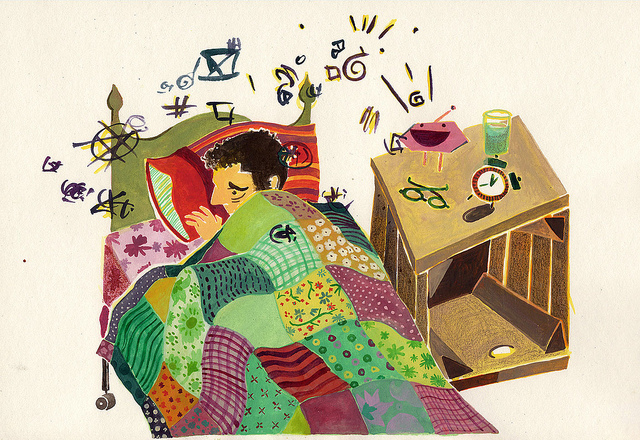Difference between revisions of "Junk Sleep"
Caseorganic (Talk | contribs) |
Caseorganic (Talk | contribs) |
||
| Line 11: | Line 11: | ||
'''Avoiding Junk Sleep:''' | '''Avoiding Junk Sleep:''' | ||
| − | *Don't touch | + | *Don't touch your cell phone a half hour before bed. |
*Don't interface with cellphone or any device which engages with someone. | *Don't interface with cellphone or any device which engages with someone. | ||
Revision as of 18:51, 6 March 2011
Definition
A physiological effect where proper REM is not achieved because one has been using consumer electronics right up until the moment of falling asleep (in addition to often leaving them on, which continues to disrupt the sleeping process).
The term was popularized by a group of graduate students in Singapore, who created the educational site Good in Bed. Their main thesis is the idea that using electronic devices right before bed would affect sleep in a negative way.
It's both the devices themselves and the nature of the content on the devices, how the content is displayed and the type of content that is consumed, and how that content is structured. This is an important distinction to make. It is not the devices themselves, but what is on them, and the role they play in connecting one's mind to certain activity flows.
An example of the opposite would be something that's not an electronic device that's bad to use before bed. For instance, there are card games that are speed based, and they might also he a bad thing to do before bed.
Avoiding Junk Sleep:
- Don't touch your cell phone a half hour before bed.
- Don't interface with cellphone or any device which engages with someone.
Is it okay to read a book via eReader before bed?
- Looking at a screen is debatable because an eBook is a book. You could have that same amount of light aimed on a paper book. It is reflecting light the same way the screen is reflecting light.
- The nature of a book, whether digital or analog, is that it is a piece of text that one can see a page of; one at a time. Vs, a highly interactive environment which invites motion such as Facebook.
- Facebook structures and dumps content into the brain at a compressed rate.
- Formatted for quick information absorption, where the narrative of a book unfolds slowly, ideas building up on each other over time. Facebook is a set of unrelated micro-narratives tied together by an interface that provides endless opportunities to interact with content.
